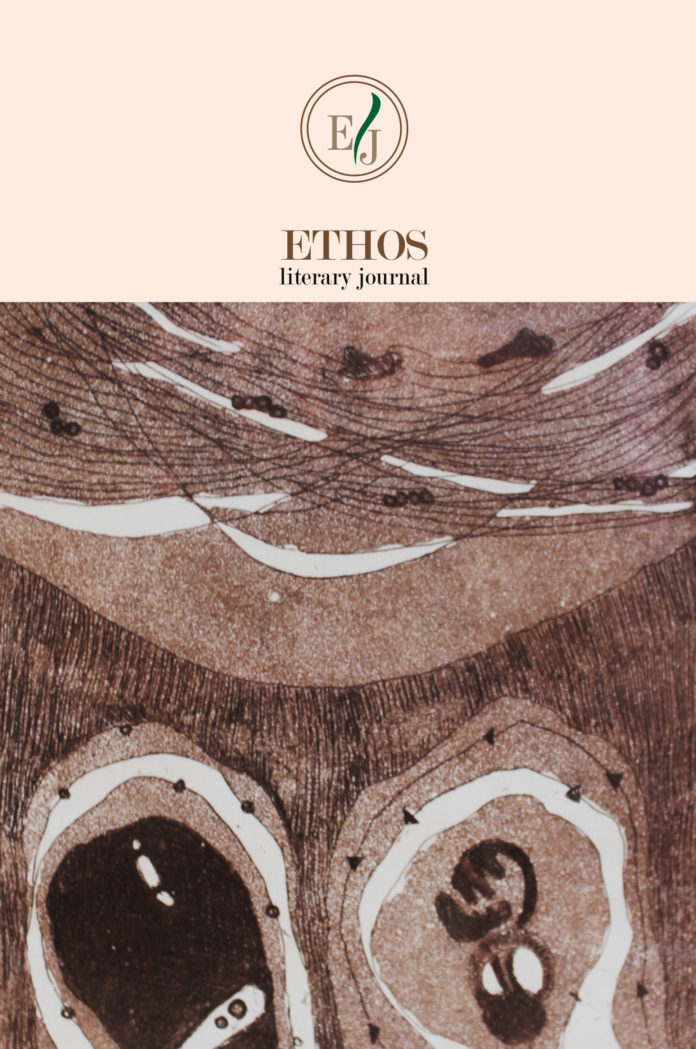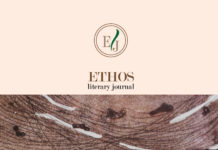Ankur Konar
Angshuman Kar is a well-known name in the map of Bengali poetry. The anthologies like Khelna Pistol (1998), Apel Saharer Samrat (2001), Nasho Square Feeter Jadukar (2006), Jehadi Tomake (2008) and Amar Sonar Harin (2012) have established Kar as a key figure in the world of contemporary Bengali literature. Besides Kar’s literary achievements, accolades that he has won such as the Krittibas Award (2007), the Paschimbanga Bangla Akademi Award (2009) and the Bongiya Sahitya Parishad Puroskar (2012) are worth mentioning.1 This article is an attempt not to focus on his poetics rather on his prose memoir tilted 25 Poisar Itihas Boi (2011) which structurally consists of five narratives related to different times in the author’s life. Kar pen-pictures his eventful childhood days in the first narrative of the aforementioned book which will be the focal point of analysis for this article.2 Taking recourse to Nivedita Sen’s observation in the Preface to the book titled Family, School and Nation: The Child and Literary Constructions in 20th Century Bengal (2016) that the approaches to childhood have to be “collated from writings on education, memoirs and autobiographical works of writers over a period” (vii-viii), it is understandable that Kar’s memoir is important because in this memorization the readers will access the childhood days of the author. Kar very carefully shapes and minutely captures his childhood which, like many other accounts of childhood memories, has its own typicality.
The narrative of 25 Poisar Itihas Boi opens with a fear psychosis related to the history book and not to history. Though the narrator fears the history book, he recreates history related to Beliatore – a rural place in the Bankura District of West Bengal which is incidentally the birthplace of the renowned painter Jamini Roy. In Kar’s attempt to recreate history related to a specific place, the local and the personal sense of history have been vividly taken care of as the book is categorised as a history of the mini narratives of the ‘little’ lives at the rural setting of Bengal. Borrowing phrases and observations from Partha Chatterjee’s The Small Voice of History (2009), we can claim that Kar’s depiction of the ‘small voices of history’ has the typical tendency to claim an authentic contribution to the grand narratives related to the rural parts of Bengal. At this point it would be relevant to quote Chatterjee’s observation in The Small Voice of History: “The small voices of the sick in rural India speak of a degree of resistance to that imperial design” (308). Kar’s personal contribution to history is evident because in his depiction the characters like Jethu, Rinki, Dipak sir, bordi become part of this personal history. Right from the beginning Kar emphasises on the typical local practices related to the particular rural place. Kar’s vivid descriptions offer some connotative visual images like the seating on the floor in school; the prevalent sense of gender-division is shown through the difference in the separateness of seating arrangement for the male and the female students in the classroom. Many writers have focused on the space of the school as the central place for their stories to develop as Richard Jenkins in Social Identity (1996) has pointed out: “Institutionalised identities are distinctive because of their particular combination of the individual and the collective” (24-5). Kar delves deep in the interplay of the ‘individual’ and the ‘collective’ as he projects his Jethu as a dominating force to maintain the discipline of the house. Jethu who himself was a teacher of History in a local school looks after the education of the children of the family. He believes education during the childhood days should not be related only to the bookish knowledge but to some broader perspective. Jethu is eager to teach the children the basic practical knowledge of one’s day to day life – for example, learning to swim in a pond. His is, in fact, a vision far away from the world of Dickensian Hard Times – the world only of ‘facts’. Kar’s recreation of childhood is unique in another sense because unlike many other writers he does not project the schools as ‘organizations that are in some ways akin to factories’ (67). The narrator’s encounter with his disciplinarian Jethu is important to map the exclusive status quo and the location in academic space – ‘good boy’ / ‘bad boy’, ‘conformist child’ or ‘rebel child’. Thus Kar’s way of looking back at life through narrative resounds with Ursula K. Heise’s idea in Chronoschisms: Time, Narrative, and Postmodernism (1997): “Narrative … is a means of bestowing meaning on one’s life because it provides the possibility of looking back at life from beyond the ending.” (48) Kar’s narrative of the academic scenario reflects the spirit of the place – both personal and collective, such that these engagements capture the evolution of a child’s understanding of his location in the social space.
The narrator’s recounting of the episodes in Class I and Class II is unique and at the same time it generates humour in the process of the making of personal history. There was a character named Pravat da who sells matar vaja at the gate of the school. Most of the children were not allowed eating any kind of televaja outside their home and neither were they given any allowances to buy anything from the outside. So, though they were tempted by Pravat da’s clarion call to buy matar vaja, not having the money they cunningly shunned the offer by using the pseudo-alibi that street foods were forbidden for them.3 It is important to note here that the local sense of power entailed in the act of buying something has something virtually global in nature:
Contemporary culture in all its variety rests on ‘money’ on ‘buying power’, and the apparently borderless postmodern world is so only for the Western elites who have the wealth and power to travel, consume and freely choose their lifestyles. In stark contrast to them stand the disposed peoples of those parts of the planet for which globalization seems often to mean a loss of security and self-determination rather than an expansion of opportunity. (Malpas 2)
The narrator and his team adopted a strategy to buy matar vaja. As they were not allowed money, they decided to buy matar vaja using the money given to them to buy books from the school. Power was attributed in the fact that when the narrator had money in his hand, he became assertive and confident to encounter the jars of Pravat da and to delve deep in it – it was those jars that always attracted the narrator, his chordi and Swasati. The children’s relish over the consumption of matar vaja bought with the money prescribed for history book becomes a profound engagement with the social structures of Foucauldian ‘discipline and punishment’ or Dostoyvoyeskian ‘crime and punishment’. The position and proposition of the childhood days offer a contradictory and contesting emotional spill over of a child and his location where the child encounters a balance between his self-induced conformity and his display of dissatisfaction.
Pravat da is a representative of that small voice of history who remains a marginal character throughout the development of this history. The authorial projection of Pravat da at the ending of the narrative reminds us Nivedita Sen’s valuable observation in the book titled Family, School and Nation: The Child and Literary Constructions in 20th Century Bengal (2016): “The endings of children’s text (…) are important to examine to what extent the author’s fundamental ideology impinges on the world of literature.” (176) It is a matter of pity that twenty years ago history book was sold at 25 paise; now it sells at rupees fifty whereas Pravat da gets only rupees two instead of twenty five paise. Taking recourse to the French Marxist critic Louis Pierre Althusser, we can say that History is always written after the rich, the powerful and the privileged. The celebrated grand narrative of History which is nothing but a process without a subject does not promote the mini-narratives of the persons like Pravat da. With a strong sense of retrospection the corresponding amount of historical space is tangled with effects: “The common sense of history may be said generally to be guided by a sort of statism which thematizes and evaluates the past for it.” (Chatterjee 304) As past is never truly passed, the socio-psychological anecdotes in Kar’s memoir help us to return to the various pleasures of childhood days with both valuation and evaluation of history. We can conclude by taking recourse to another renowned Marxist critic Terry Eagleton’s oft-cited observation in his book Criticism and Ideology (1976): “History, one might say, is the ultimate signifier of literature, as it is the ultimate signified.” (72)
Notes:
- Though Kar is mostly famous for his poems, he has also attempted prose narratives – Paribortan (2011) and Bikhato Hoibar Sahaj Upay (2015).
- The theme of childhood recurs in his prose narratives for the online magazine The Wall (thewall.in). Prior to the study of childhood, Rimi B. Chatterjee and Nilanjana Gupta’s observation in the Introduction to Reading Children: Essays on Children’s Literature (2009) should act as a reminder: “The notion of children’s literature evolves only after the “child” is understood as a separate category with its own distinct needs, demands and desires.” (3)
- “A significant corpus of children’s literature has to do with the exploits of child protagonists in their respective schools.” (Sen 79)
Works Cited
Chatterjee, Rimi B. and Nilanjana Gupta, eds. Reading Children: Essays on Children’s Literature. Orient Blackswan, 2009.
Chatterjee, Partha. “The Small Voice of History.” The Small Voice of History. Permanent Black, 2009. 304-17.
Eagleton, Terry. Criticism and Ideology. New Left Books, 1976.
Heise, Ursula K. Chronoschisms: Time, Narrative, and Postmodernism. Cambridge University Press, 1997.
Jenkins, Richard. Social Identity. Routledge, 1996.
Kar, Angshuman. 25 Poisar Itihas Boi. Parampara, 2011.
Malpas, Simon. The Postmodern. Routledge, Indian Reprint, 2007.
Musgrave, P.W. The School as an Organization. Macmillan, 1968.
Sen, Nivedita. Family, School and Nation: The Child and Literary Constructions in 20th Century Bengal. Routledge, South Asian Edition, 2016.



